Despite all the things we’ve learned about ancient history, there’s still many unexplained archaeological discoveries. Most discoveries give us a window into the past. However, there are some discoveries that defy popular knowledge about ancient civilizations and their capabilities. Like, how was Stonehenge built? What are the Nazca lines for? What’s the deal with the devil’s bible? But, just because we don’t understand something, doesn’t mean we can’t try and learn from it. Eventually, we’ll figure it out. In the meantime, it’s fun to enjoy the mystery of the past. Check out these 25 mysterious archaeological discoveries no one can explain.

Roman Dodecahedrons
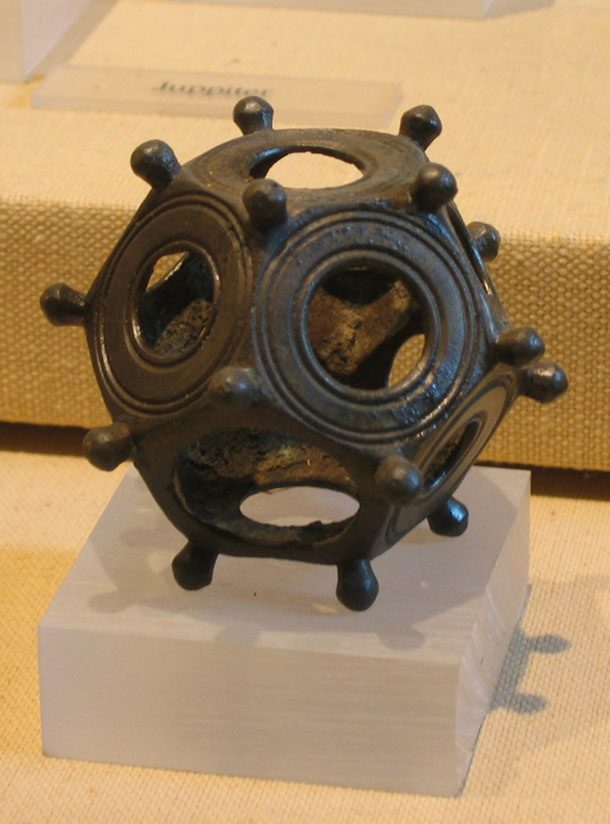 Source: http://www.ancient-origins.net/artifacts-other-artifacts-news-unexplained-phenomena/enigma-roman-dodecahedra-002371
Source: http://www.ancient-origins.net/artifacts-other-artifacts-news-unexplained-phenomena/enigma-roman-dodecahedra-002371 Dating back to the 2nd and 3rd centuries AD, Roman Dodecahedrons still puzzle archaeologists. About 3 cm to 10 cm in size, the object is in a shape of a pentagon with large holes on all sides and knobs on each point. Many theories have pointed to the artifact being a possible measuring device or religious relic. One thing we do know is they were highly valued by their owners and hundreds of them have been found all over Europe.
The Big Circles
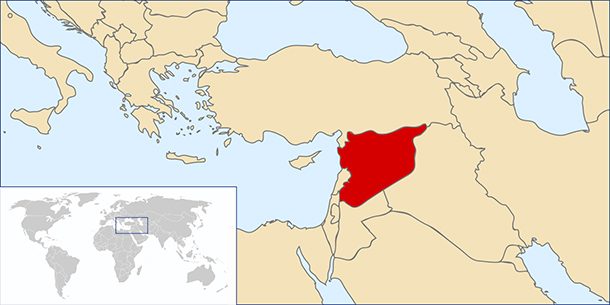 Source: http://www.dailymail.co.uk/sciencetech/article-2814715/Mystery-Jordan-s-Big-Circles-Ancient-stone-rings-desert-left-archaeologists-baffled.html
Source: http://www.dailymail.co.uk/sciencetech/article-2814715/Mystery-Jordan-s-Big-Circles-Ancient-stone-rings-desert-left-archaeologists-baffled.html Eight mysterious large circles have been discovered in Jordan and Syria using satellite imagery. Ranging from 720 ft to 1,490 ft (220 meters to 455 meters), no one knows their purpose or their date. Archaeologists still need to excavate to discover more, but the materials found suggest they could date back to the early bronze age up to the Roman period.
The Copper Scroll Treasure
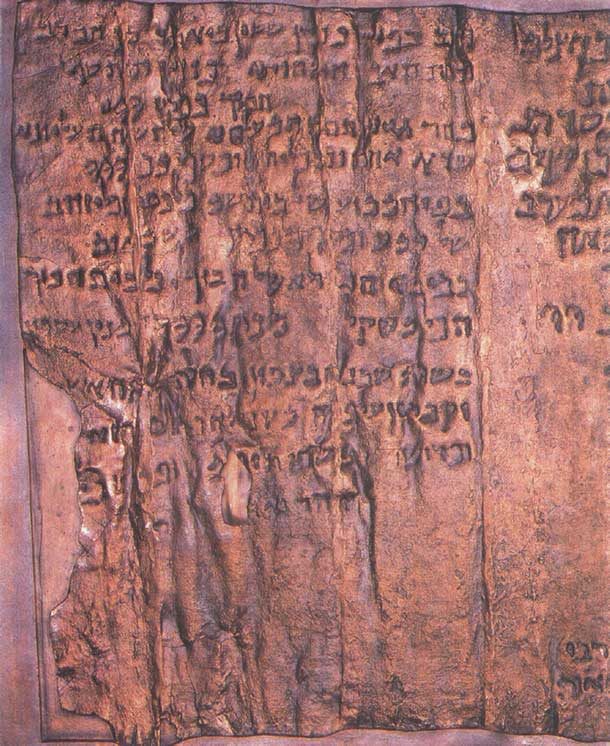 Source: http://wsrp.usc.edu/educational_site/dead_sea_scrolls/copperscroll.shtml
Source: http://wsrp.usc.edu/educational_site/dead_sea_scrolls/copperscroll.shtml A part of the Dead Sea Scrolls, the Copper Scroll was found in 1952. The mystery with this scroll is how different it is from the other Dead Sea Scrolls. When they opened it, they translated the text to read, “In the fortress which is in the Vale of Achor, forty cubits under the steps entering to the east: a money chest and it [sic] contents, of a weight of seventeen talents.” That’s right. It’s a treasure map. People are actively trying to find the Copper Scroll Treasure but its location still puzzles hunters.
The Rongorongo Writing
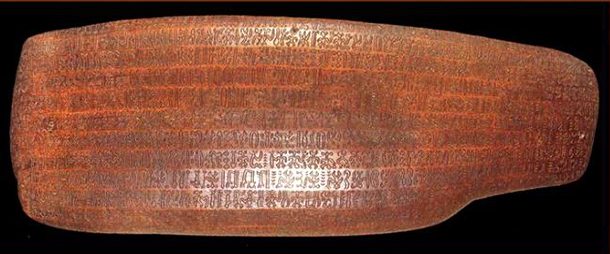 Source: http://www.ancient-origins.net/unexplained-phenomena/mysterious-rongorongo-writing-easter-island-002242
Source: http://www.ancient-origins.net/unexplained-phenomena/mysterious-rongorongo-writing-easter-island-002242 Discovered on Easter Island in the 19th century, the Rongorongo Writing is a series of tablets with glyphs on it. The glyphs have not be deciphered but some believe it could explain the mysterious disappearance of the ancient civilization on Easter Island.
Clava Carins
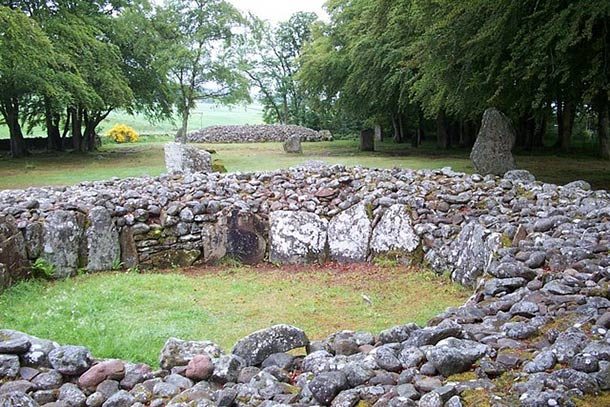 Source: http://www.express.co.uk/travel/articles/733811/Clava-Cairns-Scotland-mystery-stones-Bronze-Age
Source: http://www.express.co.uk/travel/articles/733811/Clava-Cairns-Scotland-mystery-stones-Bronze-Age Located in Scotland and dating back 4,000 years ago, the Clava Cairns is an unusual and unexplained formation of standing stones. What troubles researchers is how people of that era could move all the large stones into one place. While they aren’t sure what the cairn could be meant for, some theories have suggested a burial site, a tool to map the solstice, and even aliens.
Gobekli Tepe
 Source: http://www.smithsonianmag.com/history/gobekli-tepe-the-worlds-first-temple-83613665/
Source: http://www.smithsonianmag.com/history/gobekli-tepe-the-worlds-first-temple-83613665/ Gobekli Tepe is a massive archaeological find in Turkey dating back to 11,000 years ago, 6,000 years before Stonehenge. The site features many pillars with carvings etched into the stone of animals and other creatures. Originally, the site was dismissed as a medieval cemetery but later archaeologists discovered it was much more. The leading theory claims it was an ancient temple.
Mystery Hill: America's Stonehenge
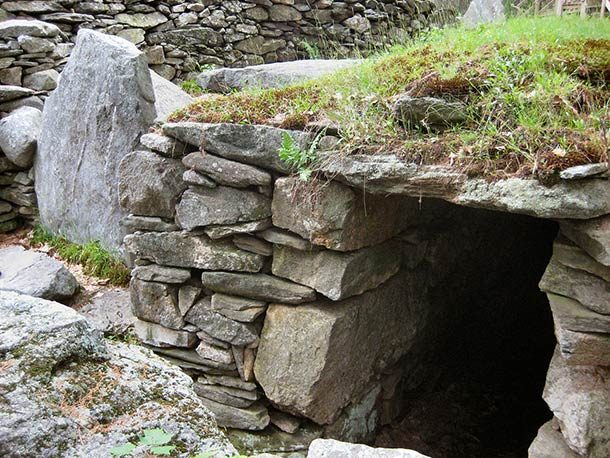 Source: http://www.atlasobscura.com/places/americas-stonehenge-mystery-hill
Source: http://www.atlasobscura.com/places/americas-stonehenge-mystery-hill Discovered in Salem, New Hampshire, America’s Stonehenge is best described as stone structures and caves. Its origins are surrounded in archaeological controversy. Originally owned by the Pattees family, the site was ignored until it was purchased by William Goodwin in 1937. Since then, theories abounded about the origins of the site. Goodwin proposed it was the result of Irish monks fleeing the Vikings. But there was no evidence of this. Archaeological researchers carbon dated the site and believe human occupation could go back all the way to 2,000 B.C. But the mystery of who lived there and what it was used for remains unsolved.
Las Bolas ("The Balls")
 Source: https://www.livescience.com/29594-earths-most-mysterious-archeological-discoveries-.html
Source: https://www.livescience.com/29594-earths-most-mysterious-archeological-discoveries-.html Locally known as Las Bolas (“The Balls”), these spherical monuments are scattered throughout the Diquis Delta of southern Costa Rica. Dating as far back as A.D. 600, the giant stone spheres are made from gabbro, a rock that comes from molten magma. The purpose for these large stones is unknown but speculations range from astronomical purposes to way-finding.
Treasures and the Disappearance of the Sanxingdui
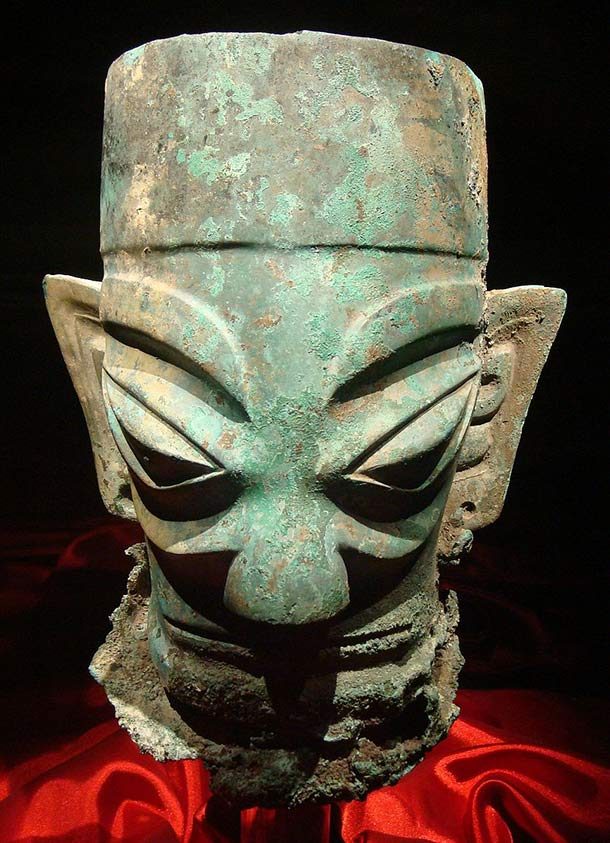 Source: http://www.archaeology.org/news/2852-141225-china-sanxingdui-earthquake; https://www.livescience.com/29594-earths-most-mysterious-archeological-discoveries-.html
Source: http://www.archaeology.org/news/2852-141225-china-sanxingdui-earthquake; https://www.livescience.com/29594-earths-most-mysterious-archeological-discoveries-.html This archaeological mystery is not so much about the item’s found, but rather the creators of the items. In 1929 and then 1986, treasure troves full of Jade; stone and bronze artifacts; and elephant tusks were found in China’s Sichuan province. Researchers believe that these treasures were made by members of the Sanxingdui civilization. Roughly 3,000 years ago, the Sanxingdui culture lived off the Minjing River but suddenly disappeared and researchers are not sure why. Theories range from war to famine. One of the most recent suggestions by archaeologists is the possibility of an earthquake. It’s possible that this earthquake caused a landslide which damned the Minjin River and forced the Sanxingdui to relocate.
Nazca Lines
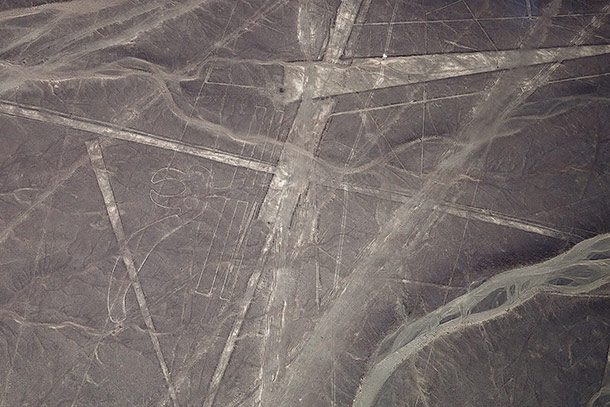 Source: http://whc.unesco.org/en/list/700
Source: http://whc.unesco.org/en/list/700 The lines and geoglyphs of Nazca are some of archaeology’s greatest enigmas. Located off the Peruvian coast plain, they were scratched into the ground between 500 B.C. and 500 A.D. Because of their nature, size, quantity, and structure, the lines puzzle archaeologists to this day. The leading theory is they had ritualistic astronomical functions.
Baghdad Battery
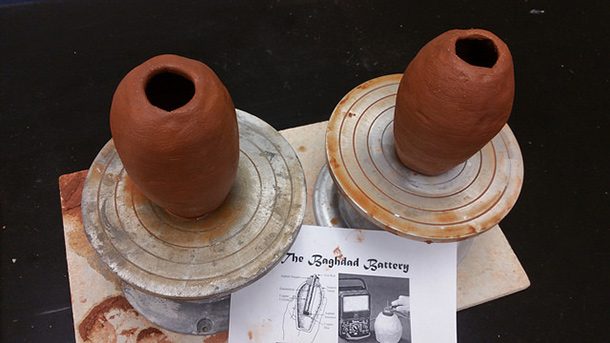 Source: https://www.smith.edu/hsc/museum/ancient_inventions/battery2.html
Source: https://www.smith.edu/hsc/museum/ancient_inventions/battery2.html An artifact dating 2,000 years ago and found in Khujut Rabu just outside Baghdad, the Baghdad Battery is a clay jar with an asphalt stopper and an iron rod sticking through the asphalt. When it’s filled with vinegar, it produces 1.1 volts and is believed to be an early battery. However, there’s no written record of this function and is the best theory we have today.
Derinkuyu
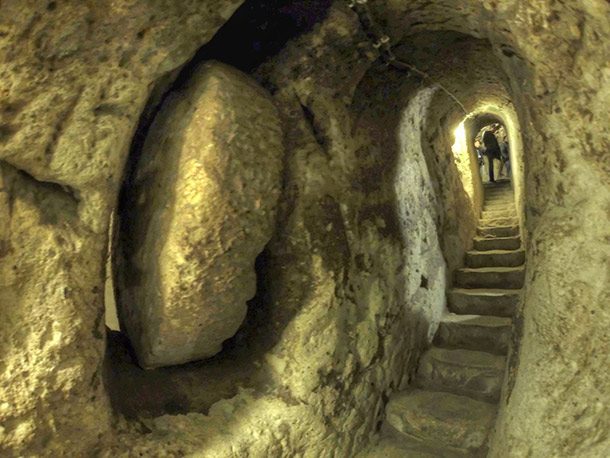 Source: http://www.ancient-origins.net/ancient-places-asia/derinkuyu-underground-city-cappadocia-0073
Source: http://www.ancient-origins.net/ancient-places-asia/derinkuyu-underground-city-cappadocia-0073 Under Nevsehir in Turkey, there’s an underground city known as Derinkuyu. While there are many underground cities in Turkey, Derinkuyu is the largest, spanning 8 levels and going down to 80 meters. It’s been dated back to the 8th century B.C., built by the Phrygians and in later times was used by early Christians fleeing persecution. Otherwise, no one knows why they were originally built.
The Shroud of Turin
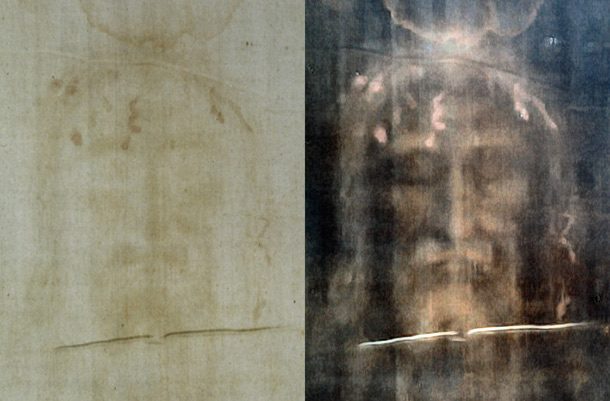 Source: http://www.kansascity.com/living/religion/article40491456.html
Source: http://www.kansascity.com/living/religion/article40491456.html The Shroud of Turin is a 14-foot long cloth with an impression of a man who endured horrible pain by crucifixion. Located in Italy, some Christians believe the shroud was on Jesus Christ as he laid in the tomb. Scientific studies continue to be controversial. There are conflicts concerning its date with some scientists dating it to the medieval period while others have dated it back to the time of Christ.
Underwater Cairn
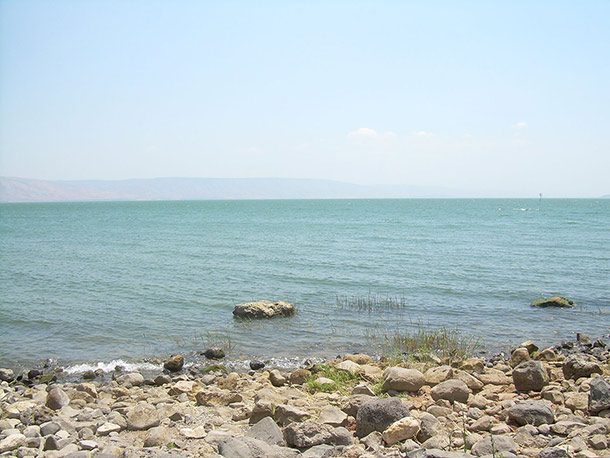 Source: http://www.popsci.com/science/article/2013-04/underwater-mystery-mound-provokes-archaeologists
Source: http://www.popsci.com/science/article/2013-04/underwater-mystery-mound-provokes-archaeologists Using sonar imaging, a large underwater cairn was found in the Sea of Galilee. The pile of stones is approximately 70 m in diameter but archaeologists aren’t sure of the date or the use of the structure. Because a large school of tilapia swims around it, some have theorized it is an ancient fishery used to catch fish.
Stonehenge
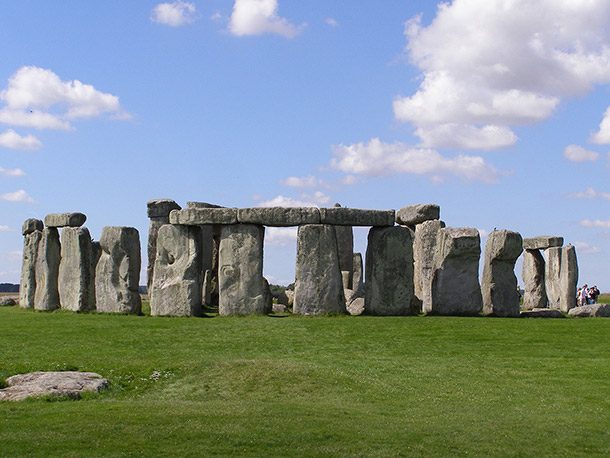 Source: https://www.livescience.com/22427-stonehenge-facts.html
Source: https://www.livescience.com/22427-stonehenge-facts.html Stonehenge is a famous archaeological site that has confounded researchers for years. The largest stones at the structure are 30 feet high and weigh 25 tons. Some of the stones originate from west Wales, meaning they were transported 140 miles (225 km). How they did that remains a mystery but it would require thousands of people all working together. Because of the labor involved, another theory claims Stonehenge could mark as the unification of England.
The Sound Effects of Hypogeum Hal Saflieni
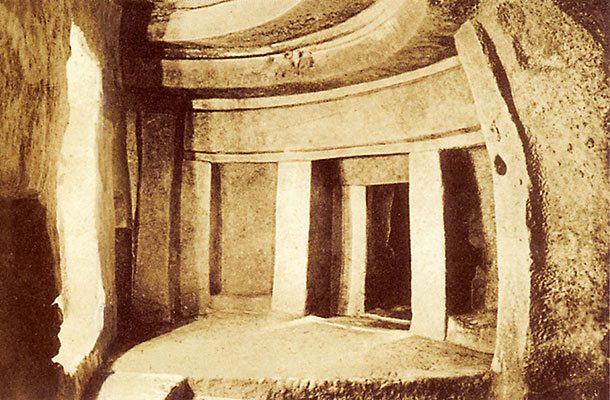 Source: http://www.ancient-origins.net/news-history-archaeology-mysterious-phenomena/experts-unravel-sound-effects-malta-s-hypogeum-hal
Source: http://www.ancient-origins.net/news-history-archaeology-mysterious-phenomena/experts-unravel-sound-effects-malta-s-hypogeum-hal The Hypogeum Hal Saflieni temple in Malta is a prehistoric discovery dating 5,000 years ago. It’s also one of the only underground temples known from the bronze age. No one knows what the structure was used for but archaeologists guess it was a sanctuary for an oracle. Even more mysterious is the sound properties associated with the structure. Standing inside the hypogeum is like being inside a giant bell and amplifies sound throughout the entire structure. Did the ancient people who made the structure design it that way?
The Khatt Shebib
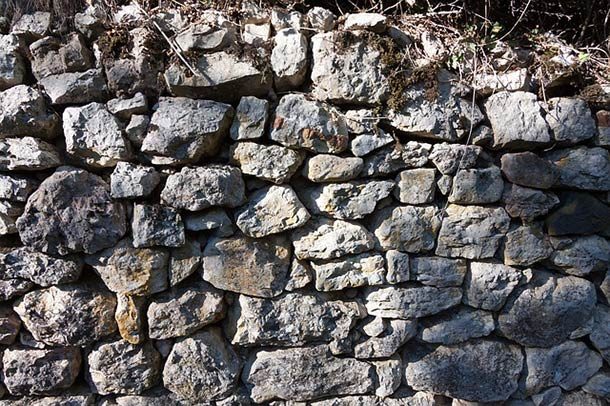 Source: https://www.livescience.com/53762-ancient-wall-in-jordan-puzzles-archaeologists.html
Source: https://www.livescience.com/53762-ancient-wall-in-jordan-puzzles-archaeologists.html Discovered in 1948 by Sir Alec Kirkbride, the Khatt Shebib is an ancient wall stretching for 93 miles (150 kilometers) in Jordan. Since its discovery, the wall has left researchers with many unanswered questions including what it was used for and how old it is. In its current state, the wall is in ruins but may not have been too high when first built, indicating it wasn’t used for defense purposes but rather by ancient farmers.
The Devil's Bible
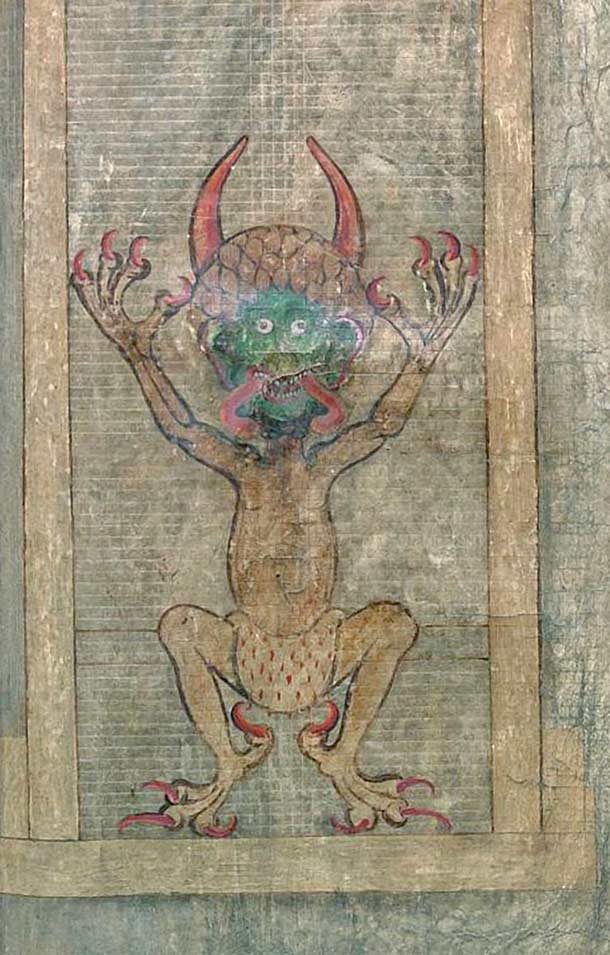 Source: http://www.dailymail.co.uk/sciencetech/article-3077265/The-mystery-Devil-s-Bible-World-s-largest-manuscript-required-one-person-write-non-stop-FIVE-YEARS.html
Source: http://www.dailymail.co.uk/sciencetech/article-3077265/The-mystery-Devil-s-Bible-World-s-largest-manuscript-required-one-person-write-non-stop-FIVE-YEARS.html Codex Gigas, also called The Devil’s Bible, is the largest medieval manuscript in the world. Its size is so big it requires two people to lift it and includes the entire old and new testament plus two books by Josephus and The Chronicle of Bohemia by Cosmas. Who created the book is unknown but some think it was a monk shut away in seclusion for decades.
Puma Punku
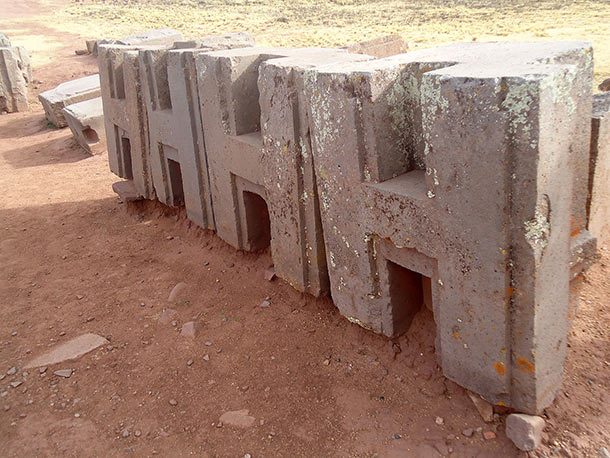 Source: http://www.ancient-origins.net/ancient-places-americas/enduring-mystery-surrounds-ancient-site-puma-punku-005317?nopaging=1
Source: http://www.ancient-origins.net/ancient-places-americas/enduring-mystery-surrounds-ancient-site-puma-punku-005317?nopaging=1 Located in Bolivia, Puma Punku is a site with massive stones carved with exacting precision. However, what puzzles archaeologists is the age of the stones. While dating has been a point of controversy, some saying they’re dated to 500 or 600 A.D. and others as far back as 15,000 B.C. It’s difficult to know how an ancient people cut the stones so precise that it looks like they used a diamond cutter.
The Longyou Caves
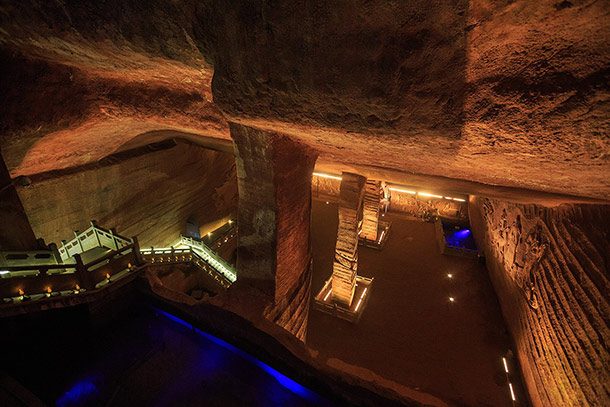 Source: http://www.atlasobscura.com/places/longyou-caves
Source: http://www.atlasobscura.com/places/longyou-caves Discovered in 1992 by a curious local of the Longyou village, the Longyou Caves are a series of man-made underground structures that were once flooded. The caverns sink as deep as 100 feet. None of the caves are connected but they share thin walls. Dated back to 200 B.C., there is no record of the caves ever being built, making their purpose and origin a mystery.
Super-Henge
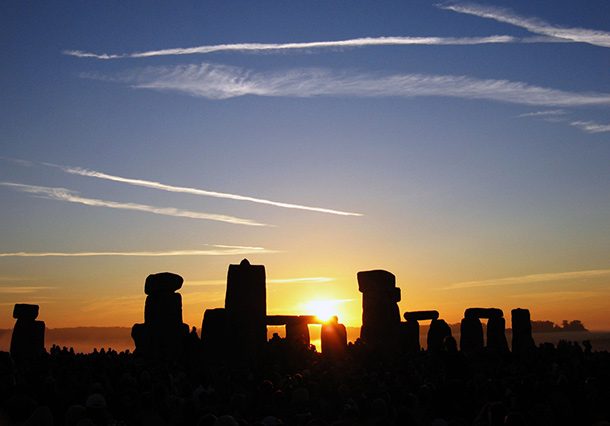 Source: https://www.sciencenewsforstudents.org/article/picture-%E2%80%98super-henge%E2%80%99-buried-near-stonehenge
Source: https://www.sciencenewsforstudents.org/article/picture-%E2%80%98super-henge%E2%80%99-buried-near-stonehenge Near Stonehenge, archaeologists discovered a bigger monument buried under the ground. Called Superhenge, the site features 90 massive stones similar to Stonehenge lined up together. Using ground penetrating radar, the researchers were able to discover the monument. But they aren’t sure what it was used for. They believe the stones were deliberately buried in the ground.
The Bolshoi Zayatsky Labyrinths
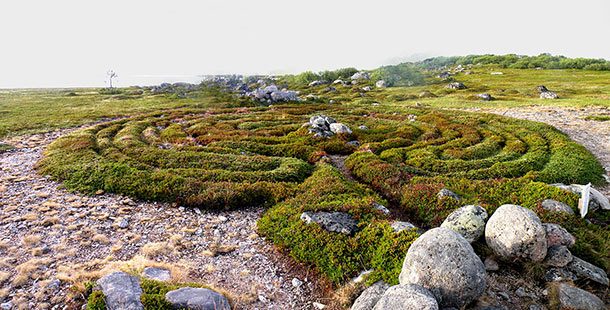 Source: http://www.atlasobscura.com/places/bolshoi-zayatsky-island
Source: http://www.atlasobscura.com/places/bolshoi-zayatsky-island A small island off the coast of Russia, Bolshoi Zayatsky Island is less than one square mile in size but features an ancient site called The Bolshoi Zayatsky Labyrinths. Dating back to 30,000 B.C., these stone heaps and earthen mounds cover most of the island. Archaeologists don’t know who built them or their purpose but have guessed it may have been an altar or ritual ceremony.
The Cochno Stone
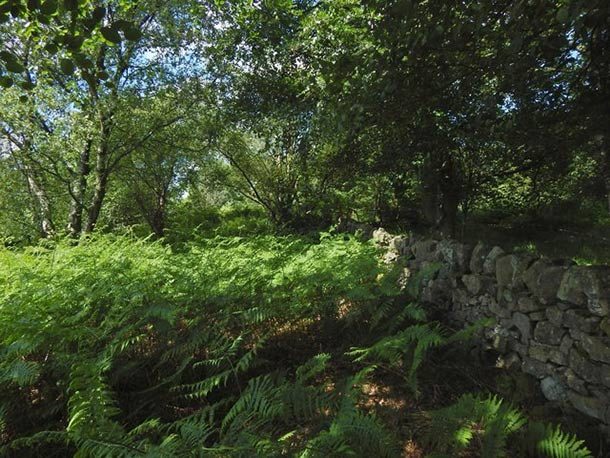 Source: https://www.livescience.com/56287-ancient-cochno-stone-reburied.html
Source: https://www.livescience.com/56287-ancient-cochno-stone-reburied.html Archaeologists in Scotland excavated a 5,000 years old stone slab with swirling geometric decorations. The Cochno Stone measured about 43 feet by 26 feet and the decorations are called “cup and ring marks” which have been found in prehistoric locations all over the world. The meaning of the artwork is unknown. After unearthing the stone, they reburied it to protect it from being damaged by vandals.
300,000 year old nanostructures
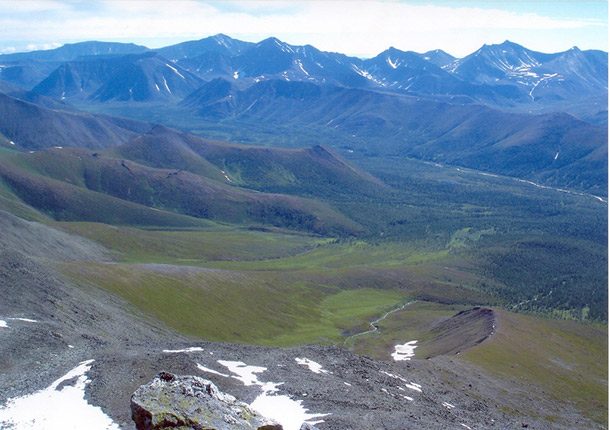 Source: http://www.ancient-origins.net/unexplained-phenomena/ancient-nanostructures-found-ural-mountains-are-out-place-and-time-002046
Source: http://www.ancient-origins.net/unexplained-phenomena/ancient-nanostructures-found-ural-mountains-are-out-place-and-time-002046 In 1991, coil-shaped artifacts were discovered near the banks of Russia’s Kozhim, Narada, and Balbanyu rivers near the Ural Mountains. After examining the artifacts they determined they were mostly made of copper. While some tried to dismiss the artifacts as debris from test rockets at the nearby space station, Moscow Insitute said they were far too old to be debris, claiming they were at least 318,000 years old.
The Tomb of Sunken Skulls
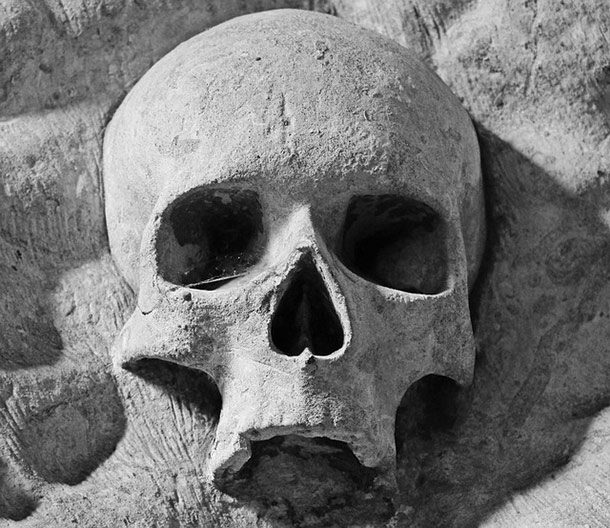 Source: http://www.history.com/news/human-skulls-mounted-on-stakes-found-at-stone-age-burial-site
Source: http://www.history.com/news/human-skulls-mounted-on-stakes-found-at-stone-age-burial-site Archaeologists in Sweden discovered an 8,000 year old burial site, with the remains of 11 human skulls of men, women, children, and infants. It’s believed Stone Age hunter-gatherers at the time mounted the skulls on stakes and buried them in a lake as part of a ceremony. However, why they would do such a macabre practice remains a mystery.
Lists Going Viral Right Now
Photo: 25. User:Itub, Roman dodecahedron, CC BY-SA 3.0 24. By Rei-artur pt en Rei-artur blog, LocationSyria, CC BY-SA 3.0 23. Wikipedia Commons.com (Public Domain) 22. Wikipedia Commons.com (Public Domain), 21. Elliott Simpson, Clava Cairns – Bronze Age monuments – geograph.org.uk – 476681, CC BY-SA 2.0, 20. Teomancimit, Göbekli Tepe, Urfa, CC BY-SA 3.0, 19. User: (WT-shared) Jtesla16 at wts wikivoyage, America’s Stonehenge, CC BY-SA 3.0, 18. Shutterstock, 17. Nishanshaman, Bronze head from Sanxingdui, CC BY-SA 3.0, 16. Unukorno, Nazca Lines Parrot, CC BY 3.0, 15. Boynton via flickr. CC BY 2.0, 14. © Nevit Dilmen, Derinkuyu Underground City 9843 Nevit Enhancer, CC BY-SA 3.0, 13. Dianelos Georgoudis, Turin shroud positive and negative displaying original color information 708 x 465 pixels 94 KB, CC BY-SA 3.0, 12. Nemo, Sea of Galilee 3682, CC BY-SA 3.0, 11. garethwiscombe, Stonehenge2007 07 30, CC BY 2.0, 10. Wikipedia Commons.com (Public Domain), 9. Pixabay.com (Public Domain), 8. Wikipedia Commons.com (Public Domain), 7. Janikorpi, Puma Punku H profile wall, CC BY-SA 3.0, 6. Zhangzhugang, Longyou Xiaonanhai Shishi 2016.12.11 15-48-10, CC BY-SA 4.0, 5. anonymous, Summer Solstice Sunrise over Stonehenge 2005, CC BY-SA 2.0, 4. Vitold Muratov, One of the Stone labyrinths of Bolshoi Zayatsky Island, CC BY-SA 3.0, 3. Geograph.org (Public Domain) 2. ugraland [1], Ural mountains 448118784 97386d9aac b, CC BY 2.0 1. Pixabay.com (Public Domain)



























